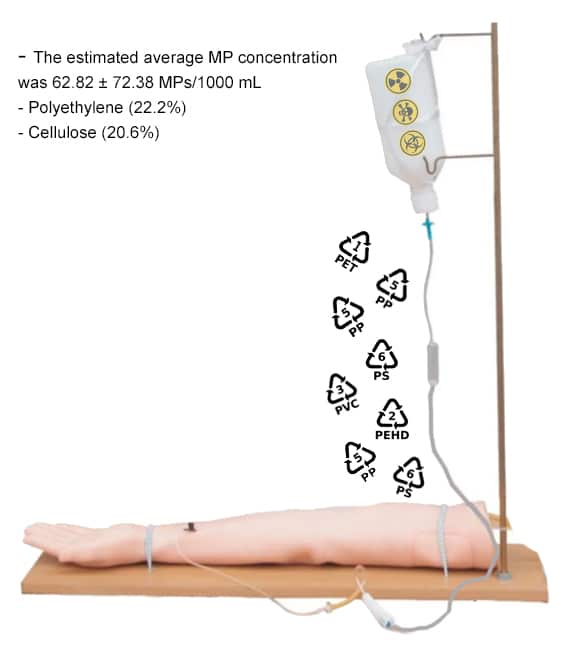A new study has revealed the presence of microplastics (MPs) in hypertonic fluid solutions, a type of intravenous (IV) fluid commonly used in hospitals. The findings, published in Environmental Toxicology and Pharmacology raise concerns about potential health risks associated with MP exposure through medical treatments.
Researchers from Çukurova University/Türkiye and Roskilde University/Denmark investigated 13 hypertonic fluid samples from various brands. Alarmingly, MPs were identified in 67% of the samples, with an average concentration of 62.82 particles per 1000 milliliters (mL). Dr Sedat Gündoğdu, the corresponding author of the study, states that these results are a direct way of human exposure to microplastics, unlike previously known exposure routes, and that there is a much greater risk than previously thought. Dr. Kristian Syberg one of the author of the study, states that the study highlights that the comprehensive use of short lived plastic on the health care sector, is associated with risk that we currently do not understand well enough.
Microplastics Across the Board
The study employed a multi-step approach to detect and analyze MPs. Visual examination indicated potential MP presence in all samples. Further confirmation through µ-Raman analysis revealed that 42 out of 63 examined particles were indeed MPs. The analysis also showed that the type of plastic packaging did not significantly influence MP concentration. Polypropylene (PP) and polyvinyl chloride (PVC) were the primary packaging materials identified. Using µ-Raman analysis, a total of 12 synthetic polymers and cellulose were identified. Polyethylene (22.2%) and cellulose (20.6%) were the most common, highlighting the potential sources of MP contamination.
Urgent Need for Further Research and Action
The study underscores the potential health risks associated with MP exposure through hypertonic fluids. The authors emphasize the need for further research to:
- Identify the precise origin of MPs within these solutions.
- Understand the potential health consequences of MP exposure in patients.
- Develop alternative medical equipment and packaging materials free of MPs.
- Healthcare providers are urged to consider these findings and explore alternative options to ensure patient safety
The full study – Uğur Çağlayan, Sedat Gündoğdu, Tiffany M. Ramos, Kristian Syberg. Intravenous hypertonic fluids as a source of human microplastic exposure– Environmental Toxicology and Pharmacology. https://doi.org/10.1016/j.etap.2024.104411

